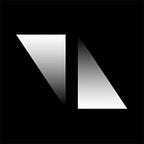The 7160 Standard Explained
The 7160 standard builds upon the concept of non-fungible tokens (NFTs) by introducing a multi-metadata functionality. This feature significantly expands the capabilities of NFTs, allowing for a richer and more interactive collector experience.
The authors of this standard are 0xG & Marco Peyfuss (co-founder of Transient Labs); you can find the EIP here: https://eips.ethereum.org/EIPS/eip-7160
Here are the key points that define the 7160 standard:
Multiple Metadata URIs: Unlike traditional NFTs that link to a single metadata URI, the 7160 standard allows each NFT to link to numerous metadata URIs. Similar to the Doppelganger contract, with one key difference: the metadata arrays are specific to tokens and not the contract. Now, you can have a collection of NFTs, each with its own metadata array, meaning artists can create collections and add multiple aspect ratios for each artwork, all in the same collection!
This means one NFT can hold and display various images or files. Supported File types include JPG, JPEG, PNG, GIF, SVG, HTML, GLB, MP4, and MP3. The max size for each file is 300 MB, while there is no limit on the array.
Customizable Displays with Pinning: The pinning feature of 7160 is particularly unique. By default, the token metadata will always show the latest metadata option added to the array. Pinning allows collectors to ‘pin’ a specific URI, making it the primary display for the NFT regardless of new metadata being added. As expected, the NFT owner can switch between all the artworks available within the NFT whenever they want.
Event-Driven Architecture: The standard uses an event-driven approach for updates. Events like TokenUriPinned and TokenUriUnpinned are emitted when changes are made, signaling platforms and apps to update the displayed metadata, thereby reducing the need for direct blockchain interaction.
Personalization for Collectors: Artists can add new files to the array post-sale. However, they can never remove assets added to the array, protecting collectors. An example use case: at the moment, many artists are experimenting with metadata updates where they will sell artwork, and then when it finds the collector, they update the artwork to reflect some personalization on behalf of the collector. With 7160, the artist can add the “personalized” version of the artwork to the array, allowing the collector to keep the original and newest one!
Backward Compatibility and Easy Adoption: The 7160 standard is designed to be backward compatible with the existing ERC-721 contracts, ensuring that current NFT platforms can quickly adopt it without significant changes.
Why 7160 is a Game-Changer for NFTs
The 7160 standard is transformative for several reasons:
Enhanced Collector Experience: Collectors can now interact with their NFTs more engagingly, choosing how to present their digital assets. Each artwork in a collection can have multiple aspect ratios attached to it or even different color variations of the same piece.
Artist Flexibility: Artists are no longer constrained by the one-to-one relationship between an NFT and an artwork. They can now expand their creative offerings under a single NFT, providing a more comprehensive representation of their work — a proper way to balance scarcity and accessibility.
Collaborative Works: With the ability to hold multiple pieces of metadata, a single NFT can become a collaborative space where numerous artists contribute different pieces of work, each represented within the NFT’s metadata array.
Long-Term Engagement: The ability to add and pin new metadata keeps the NFTs relevant and exciting over time. It encourages ongoing engagement as collectors look forward to new additions and updates to their owned pieces.
In conclusion, the 7160 standard enhances the NFT ecosystem with its multi-metadata capability and brings a level of personalization and dynamism previously unattainable. It paves the way for NFTs that are more interactive, collaborative, and engaging, benefiting creators, collectors, and marketplaces alike.
